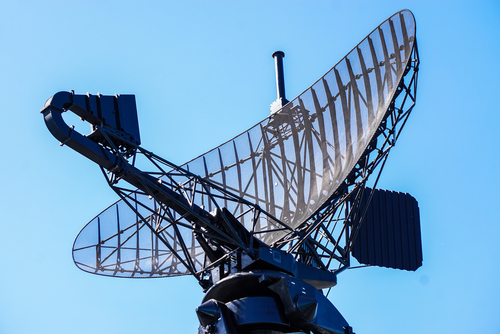Modern radar equipment, commercial and military communication systems and microwave sources require excellent operating stability, extremely low phase noise frequency sources in UHF band. Ovenized or oven-controlled crystal oscillators, commonly known as OCXOs are an ideal choice in situations where temperature-compensated crystal oscillators or TCXOs cannot provide the level of frequency stability required by the application. Double oven-controlled crystal oscillators (DOXOs) are more reliable but they are also significantly more expensive.
Crystals and Thermal Expansion
To understand OCXOs, it’s important to remember that the physical dimensions of the quartz crystals dictate the frequencies at which they vibrate. This means that, if the crystal expands or contracts due to exposure to high or low temperatures, its frequency will also change. Quartz crystals have a lower coefficient of thermal expansion compared to other materials but, in applications where high levels of frequency stability is needed, it’s important to keep thermal expansion and contraction to a minimum.
As their name implies, the operating temperature of OCXOs are controlled by a crystal oven, a chamber that uses heating elements and temperature sensors to ensure the crystal stays at a precise temperature and stays constant throughout the entire operation. This, in turn, allows the crystal to maintain its physical dimensions and produce a stable and reliable frequency. High-end OCXOs typically have ultralow noise and therefore have high signal-to-noise ratio.
It’s important to note that the precise stability of OCXOs have some trade-offs. Since they require constant heating, they consume a lot of power and are therefore not ideal for battery-powered applications. OCXOs also come with several components aside from the crystal itself, including the heating elements and thermal insulation, which means they require substantial space and are not suited for miniature device applications
OCXOs in Radar Applications
Because of their frequency stability, OCXOs are used in applications that require high levels of short-term and long-term stability as well as in instrumentation requiring low phase noise. One of the most common examples is radar instrumentation.
Radar equipment use OCXOs to ensure they keep a good channel lock and produce clear and sharp pictures. These are especially important when in flying aircraft since high altitude turbulence, the radar wing engine vibrations, and other factors may interfere with frequencies, resulting in blurry radar images and satellite links which may cease to operate.
The frequency stability offered by OCXOs is also especially important for radar instruments mounted on mobile platforms. These devices usually encounter high noise levels brought about by the platforms’ vibrations and find it difficult to track small and/or slow-moving targets. Oven-controlled crystal oscillators help these instruments reduce noise levels and achieve optimum performance.
OCXOs in Frequency Translators
OCXOs produce stable, precise, and low-noise frequencies, but there are times and applications where an additional different frequency band is required. In these instances, using a frequency translator is the best option. This device usually consists of an oscillator and a frequency mixer and is used to replicate signals from one frequency band to another without disrupting the proportionality of the signals’ frequency separation and disturbing the relationship between the carrier and its sidebands.
Synergy Microwave Corporation is offering distinctive ultra-low noise signal sources for single frequency applications such as clock translators for instrumentation and radar markets. These products can also be ideal companions as clock translators for high speed ADC and DDS clocks for improved signal purity. These products convey significant noise floor improvements over multiplied crystal oscillator solutions employed today.
As an example the Synergy Microwave LNFTD-10-120240-12 is a low noise, phase locked reference frequency translator that receives a low noise 10 MHz reference input signal and phase locks to a noise and stable output from a crystal oscillator at 120 MHz. A second output is also available at a second harmonic of 240 MHz. This product is ideal for generating low noise signals from a master reference and clock distribution for multi-function high frequency synthesizers used in RADAR systems, test equipment and laboratories.
For further information on OCXOs and Frequency Translators please call Peninsula Technical Sales at 650-965-3636 or visit our web page. We are happy to discuss products that best fit your needs.
Peninsula Technical Sales represents electronic equipment manufacturers and is proud to offer our services online and to the following cities and their surrounding areas: San Francisco, Santa Clara, San Jose, Fremont, Sacramento, Milpitas, and Santa Rosa.

